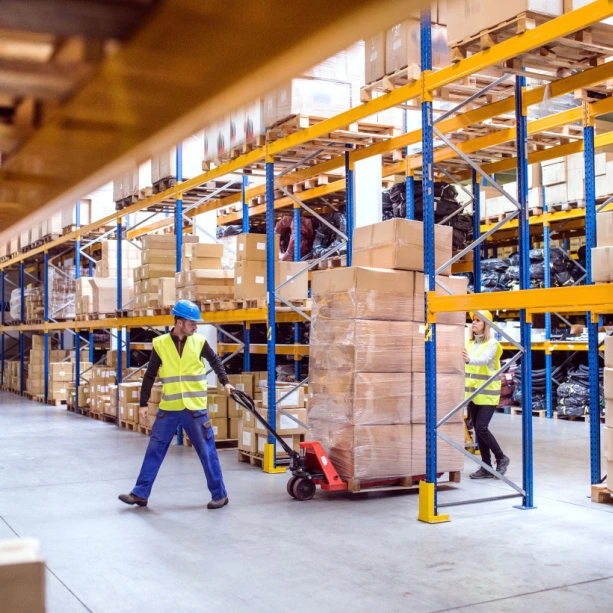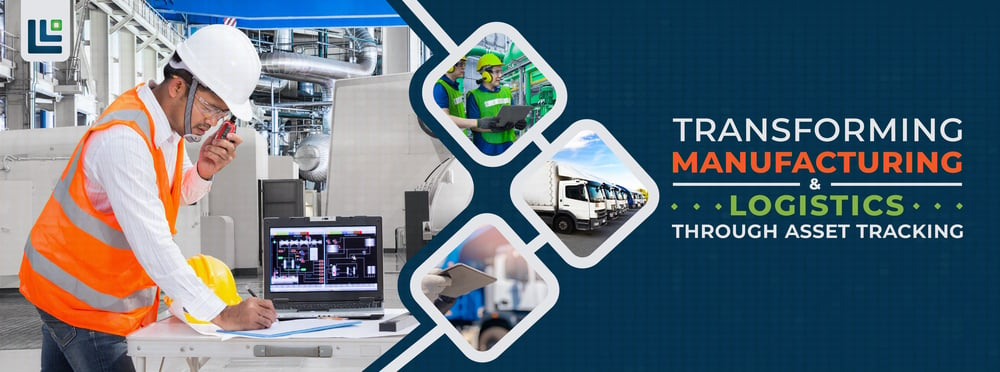Warehouse automation can come in different forms. The most familiar form is machines and robots throughout the production process. A form of automation less familiar to companies is inventory management processes. Automation through the use of machinery has shown clear value, but only a few companies see the value of automation at the next level. Let’s break it down to help you understand.
What are the Three Levels of Warehouse Automation?
Low Automation
The most basic level of automation relies on print order forms, with team members having to walk around the warehouse searching for the item they need. Typically these systems have some form of warehouse management, meaning there is greater inventory visibility within the warehouse.
Average Automation
The standard amount of automation in the average warehouse has helped companies to manage processes and improve efficiency. This can include conveyor belts and loading devices used to move materials from one place to another. Most current warehouses have this level of automation within their warehouse and have found it leads to cost savings and increased productivity.
Full Automation
A fully automated warehouse has no human employees. This warehouse would be made up entirely of robots and automated machinery. These types of warehouses don’t exist in many places. Some warehouses are heavily automated with minimal human labor. These warehouses typically automate parts of processes to make transitions smoother and spend their time more efficiently.
Why Do You Need Automation in Your Warehouse?
Having an automated warehouse provides value in a number of ways. The primary way automation adds value is by increasing efficiency. Automating specific processes within the warehouse allows time and work to be reallocated elsewhere. Instead of someone walking a material from one station to another, a conveyor belt can take the material automatically to the next work station. Another way automation improves efficiency is by increased visibility with an automated warehouse management system (WMS). The visibility a WMS provides gives insight into where important assets are located within the warehouse. Whether you need to know inventory levels or are searching for pallets to hold packages; these automated warehouse systems provide that information to you in real-time.
Join the AirFinder Difference!
- Innovation. Organizations can be freed up to innovate and bring more impactful products and services to market.
- Profitability. Increased profitability provides new opportunities to innovate and improve valuation.
- Digital Transformation. Discover competitive advantages, new revenue opportunities, improved customer relationships, and increased efficiency.
What Processes Can Be Automated in the Warehouse?
Technically speaking, every process within the warehouse can be automated. Complete automation reduces spending on human labor, but investing in each piece can still be a little pricey. The best option to get started with automation is choosing a few areas that could benefit the most from automation. These could include the transfer of materials from one workstation to another or tracking tools and inventory within the warehouse to cut down search time.
How Do Automated Warehouses Work?
Warehouse management systems provide visibility into products and materials the entire time they’re in the warehouse. Warehouse managers aren’t looking to rid their employees; they’re looking to technological solutions to improve accuracy and efficiency. These managers have recognized that technology can ease some of the stress employees deal with daily with seemingly meaningless tasks. While searching for the item you need isn’t necessarily meaningless, if that time spent searching can be eliminated, that would help the company improve. Time can be spent producing rather than searching, and output numbers will increase. Unfortunately, your eyes can’t always be on each piece of inventory as it moves around the warehouse; warehouse automation software can have eyes for you.
How Does Asset Tracking Fit In?
Our asset tracking solution helps companies with warehouse management. Warehouse automation in logistics is difficult to do on your own; the word “automation” proves that it can’t be done manually. Asset tracking systems give warehouse managers full visibility of the inventory in their warehouse. They can know where everything is, how often it’s used, and other information they need to make decisions. Instead of your employees spending a couple of hours each searching for what they need, they can simply look up the tool and see its current location. Current location is key with an asset tracking system. Knowing the last place the tool was seen is not always enough. Worker A might be looking for a ladder to use, after searching for 10 minutes, she asks worker B if he’s seen the ladder. Worker B had seen the ladder that day, but he had seen it two hours earlier. This information can be useful in some ways, but there’s a strong chance the ladder has been moved since the last time Worker B saw it. A better option is to use the real-time location system (RTLS) to see where the ladder is at the moment Worker A is looking for it.
Automate Your Warehouse with AirFinder!
AirFinder is an asset tracking system that provides users with the real-time data they need to make decisions and complete their job in a timely manner at the best quality possible. Asset tracking gives you visibility of items in your warehouse, so you work more efficiently. Warehouse automation has become the key to a warehouse’s success in recent years. If you’re not automating, you’re risking falling behind your competitors. Book a demo with our team to learn how we can help you automate your warehouse and give you the real-time visibility you need.





